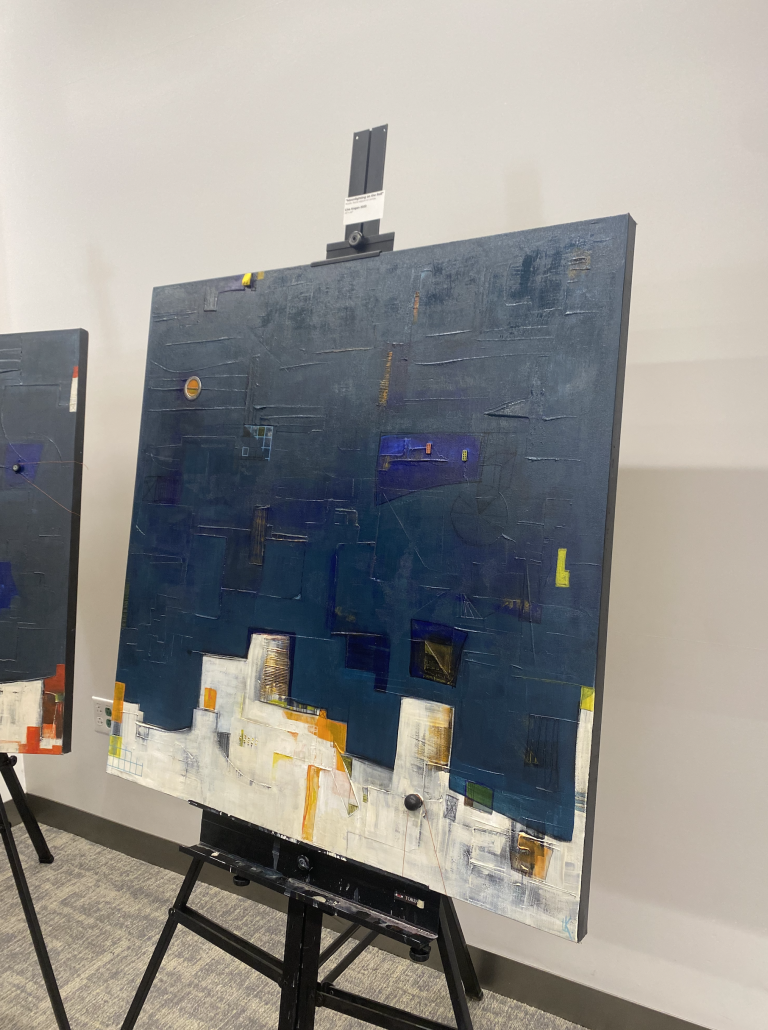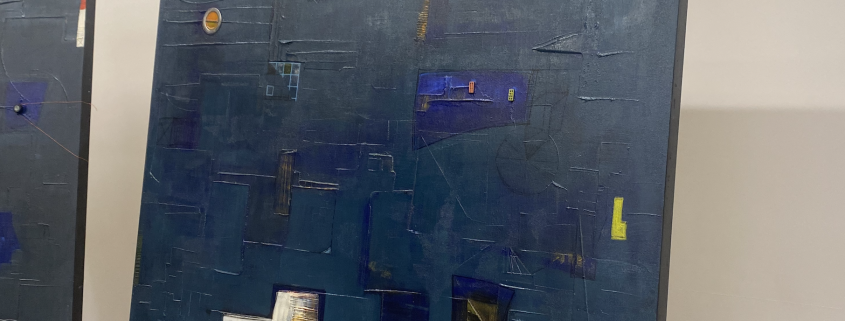Exploring the work of a Ukrainian-born alum

The representation of the self and one’s culture in artistry is delicate, yet when harnessed with precision and care, its power can reach far and deep. Viewers experienced this power first-hand at the day-long art exhibition “Current,” showcasing the work of Ukrainian-born artist Lina Kogan in USC Michelson Center Jan. 25.
At 20 years old, Kogan moved from Kyiv, Ukraine, to the United States, where she eventually graduated with a master’s degree in computer science, multimedia and creative technologies at USC in 2000.
Kogan’s experience with technology, combined with her practices in the fine arts, has helped her produce works that are rich in theme and technique. Her “Current” collection was a perfect demonstration of dedication to depth.
Consisting of canvases small and large, the works in “Current” speak to viewers with minimalist expressions of landscape and color. From the pallets of blue, green and red, each piece stands out in telling its own variation of human emotion or inner expression. Looking closer at the pieces, it’s clear that these colors aren’t working alone, but are meticulously accompanied by the attachment of everyday physical objects, such as computer keys or legos.
“It’s a presentation of our current life, full of technological objects that are sometimes making our lives easier, but sometimes making it even harder to focus,” Kogan said in an interview with the Daily Trojan.
Gabriel Calub, a sophomore majoring in aerospace engineering, arrived at Wednesday’s exhibit with an interest in Kogan’s work from a class he was taking on the modern history of Russia. A fellow STEM student, he took appreciation for Kogan’s unique mixed media approach.
“I’m interested in the fact that the art is also influenced by somewhat of a technical background,” Calub said.
For Sydney Crowley, a junior majoring in international relations and non-governmental organizations and social change, a stand-out piece was “Persistence of Rewritable Memory.”
This acrylic 24” x 18” piece from 2020 contains rectangular strokes of warm colors that contrast the cooler canvas background. What is most prominent about this artwork is its use of very fine and delicate orange thread forming arches along the edges of the canvas. Though they don’t dominate the painting itself, they create an effect in their fragility and red tone against the cool and abrasive textures found throughout the painting.
“In here we have an orange thread that my grandmother brought from Ukraine. I have a lot of collage elements that are actually from Ukraine,” Kogan said. “It’s crazy because I did leave 30 years ago but still, our family brought some artifacts that I find in some, maybe in a box of buttons that my grandmother brought, I reach into that box and I find some funky objects, and I use them in the art. So I have a box of various things, and most of them are from the old world.”
Crowley referred to the piece’s use of thread as a sort of bridge between emotional and cultural experience with the fine arts.
“I loved her art piece where she used the thread from her grandmother, who passed away because … it’s just something very impactful, just familial ties, but also part of an abstract, technical art piece,” Crowley said. “So it just showed how many layers there are to her art that you would have never thought that that thread was significant, unless she told you about it.”
On Feb. 24, 2022, Russian forces launched a full-scale invasion on Ukraine, causing immense destruction in cities and the death of thousands of civilians, along with millions who have decided to flee Ukraine to escape the destruction. Crowley expressed that the recent conflict has become essential context for not just Kogan’s work, but the study of modern Russia as well.
“It was really important that if we’re going to discuss Russia and its current state, it’s intrinsically linked to the situation in Ukraine geopolitically,” Crowley said. “So it was important that we also elevate Ukrainian voices … and appreciate their experiences through this warring period.”

